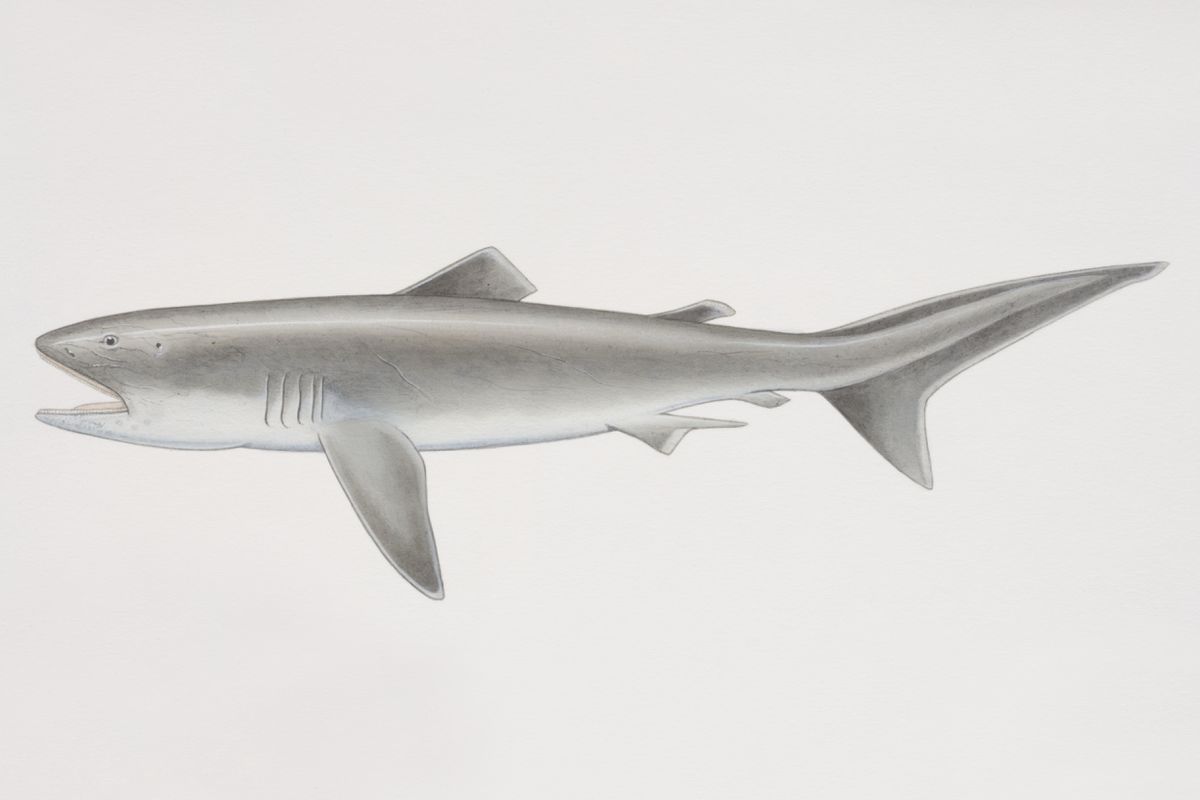The megamouth shark (Megachasma pelagios) is a large filter-feeder first discovered by a U.S. Navy research vessel in Hawaii in 1976. The shark was tangled up in some underwater cables and not formally described until 1983 when it was given its moniker due to its largemouths. It seems to have a global distribution in temperate and tropical waters, having been reported in Taiwan, Japan, the Philippines, and occasionally in the Indian or Atlantic Ocean. In the southern region of the Eastern Pacific Ocean, megamouth sharks have been reported off the coast of Ecuador, with a total of four bycatch events between 2004 and 2016. They had never been officially observed in Peru… until now.

The megamouth shark (Megachasma pelagios) is a large filter-feeder first discovered by a U.S. Navy … [+]
getty
The reports are part of a long-term small-scale fisheries monitoring project operating out of multiple fishing ports along the Peruvian coast. Fishermen participating in the project are trained to collect information about target and non-target catch species. “I think the program is good as fishermen feel proud to show these releases at sea, they feel good their efforts sometimes have a happy ending, but also they are fishing in a more responsible way,” says co-author Dr. Joanna Alfaro-Shigueto of the Universidad Científica del Sur, Antigua Panamericana.
Between October 2018 and October 2019, seven megamouth sharks were reported as bycatch in the small-scale surface and midwater gillnet fisheries operating from the ports of Mancora and Salaverry in northern Peru. “It was exciting [to realize these were the first official observations of megamouths in Peru],” exclaimed Alfaro-Shigueto. “At first we had no idea! Then we looked at the images, checked ID guides, and consulted with experts to confirm it was this species… it was thrilling. However, at the same time, we realized that this amazing species is incidentally caught as bycatch in fisheries and were sad.”
Six of these megamouths were alive when captured and released, with the biggest measuring more than 16.4 feet (5 meters). Four of the individuals were also identified as male. “We did not notice anything different about these species compared to others around the world, but there are not many records yet so maybe with time we will learn some more,” commented Alfaro-Shigueto. “Perhaps there is more of them in Peruvian waters or perhaps they were always there and only now we are learning about them.”
Coastal upwelling – transport of nutrient-rich water from the deep ocean up to the surface – makes the coastal waters of Peru nutrient-rich. It is thought the high biological productivity may attract the megamouth sharks to the area where this upwelling converges with the Surface Equatorial Waters (SEW), Surface Tropical Waters (STW), and Peruvian Cold Coastal Waters (PCCW). “A similar pattern was observed for megamouth sharks in Ecuador and Mexico,” explained the authors. “Under these conditions, these sharks are presumably foraging in productive areas that overlap with coastal fisheries and make them prone to by-catch interactions.” The theory seems to check out, as past studies have described these massive sharks to feast on euphausiids, copepods, jellyfish, and possibly small fishes (like Peruvian anchovy, Engraulis ringens)… all animals you find in this region. Does it mean that northern Peru represents a potential foraging zone for the species? Possibly. But scientists won’t be able to know for sure unless monitoring continues.

The reports are part of a long-term small-scale fisheries monitoring project operating out of … [+]
getty
The team sat down with fishers from Mancora and Salaverry to discuss how rare these findings were. While it is the first ‘official’ in academia, the Mancora fishers indicated that megamouths (locally known as “tiburon chirimoya” or “tiburon guanabana”) are captured sporadically and mostly released alive due to their large size. The story is different in Salaverry, where it is said to be an unusual capture. The authors believe this may be due to the abnormal environmental conditions here (shifting currents or temperatures, variations in food availability, etc.) possibly coupled with poor awareness of this species by the fishers. Still, this is the first time such a high number of by-catch captured megamouth sharks has been reported in such a relatively small area over a short time. This is why the researchers stress how important continued monitoring programs in small-scale fisheries here are. It is the right step towards assessing the extent of this species’ occurrence in Peru and its overall vulnerability.
This article is auto-generated by Algorithm Source: www.forbes.com


